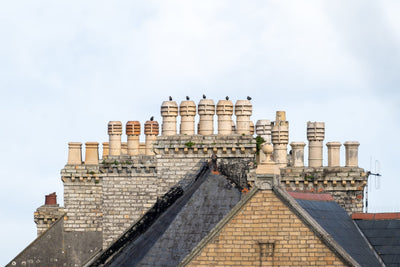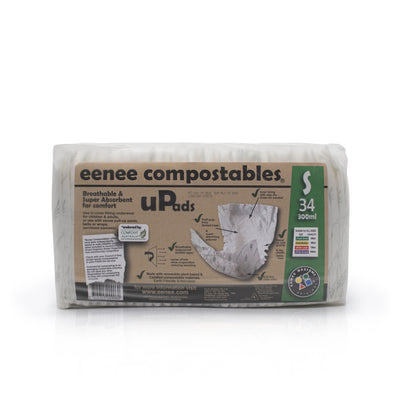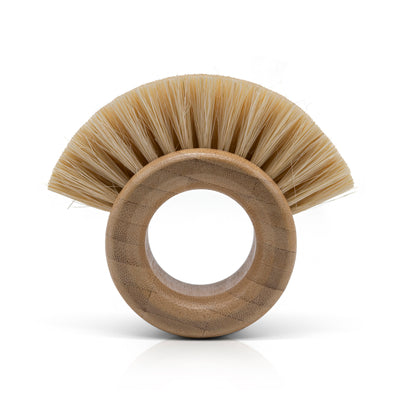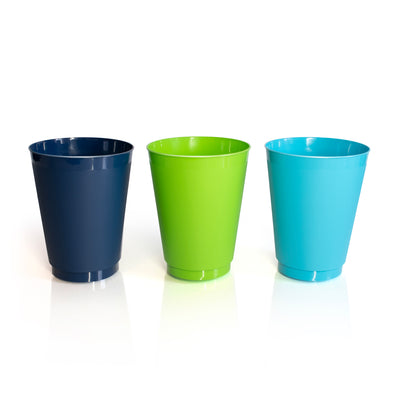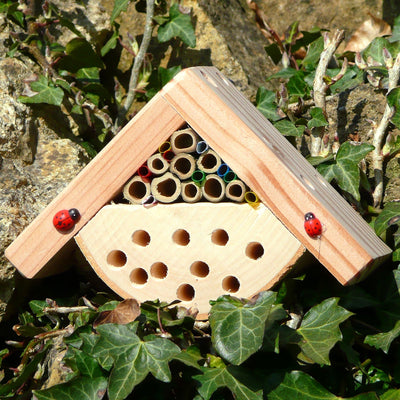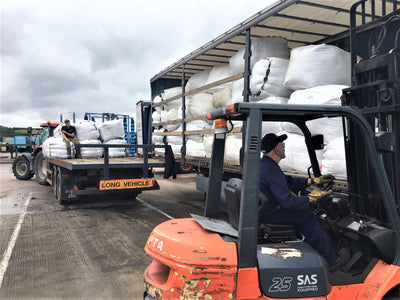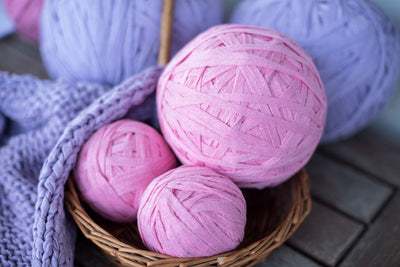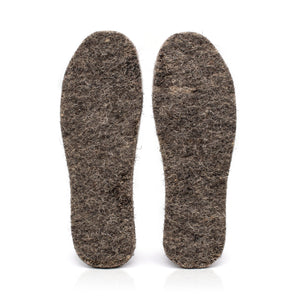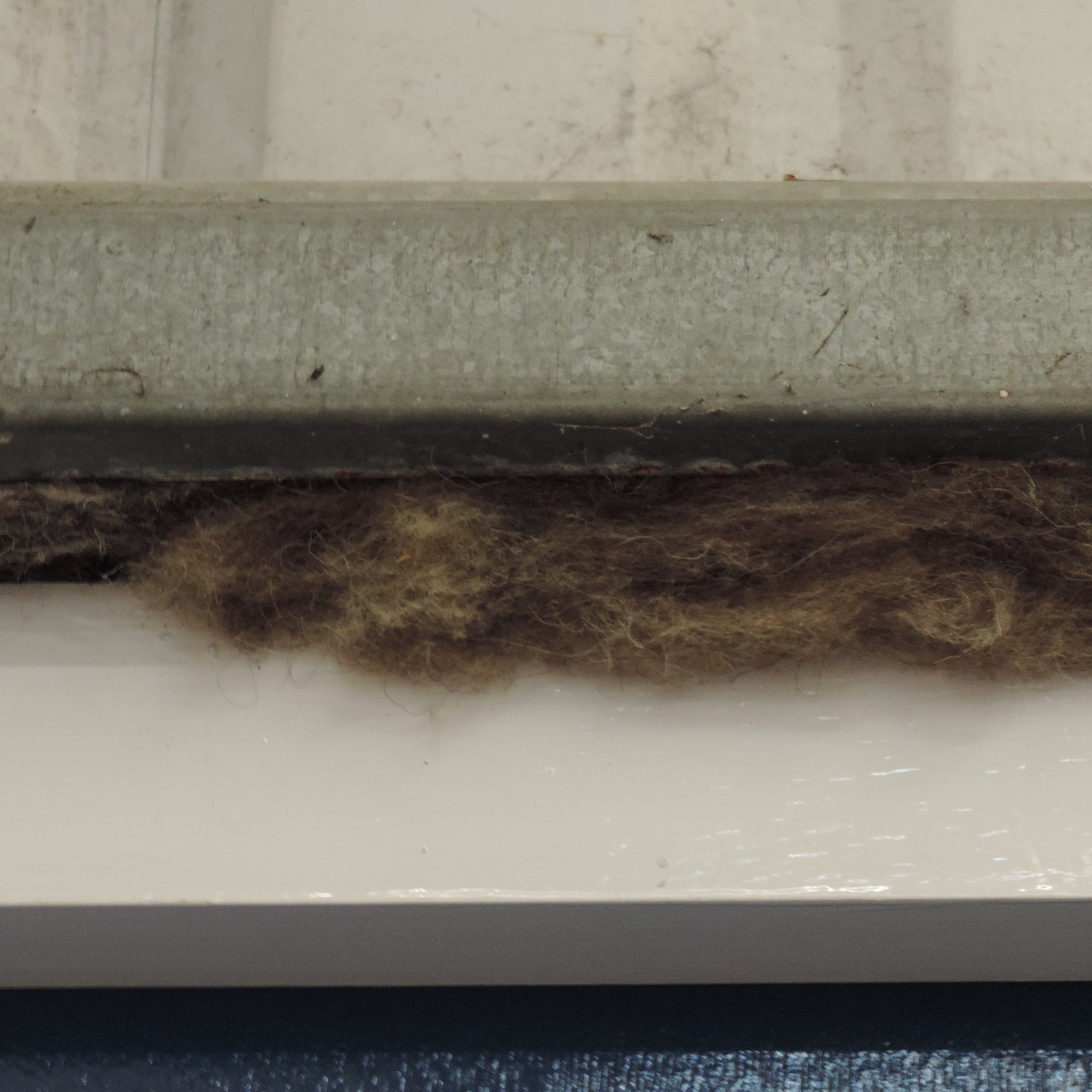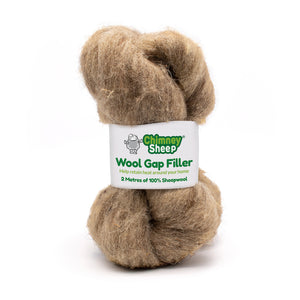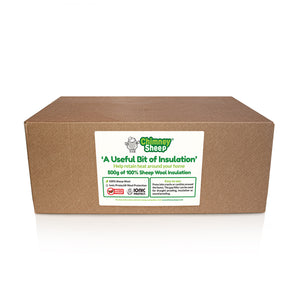How can I use this insulation?
The great thing about this section of insulation is that it can be used for lots of things! This insulation is the exact same stuff as our normal rolls of sheep wool insulation, just a smaller piece which means that it is 100% natural wool and moth proof. Here are a few ways you can use it:
-
To fill cracks and gaps around your home – if you have gaps and cracks around your home, they could well be letting in cold draughts. Stuff these with bits of this insulation and the draughts will stop, which will leave your home more energy-efficient and make it feel warmer. Wool is breathable so you don’t need to worry about any damp occurring from filling the gaps.
-
As extra sound insulation in your chimney – our Chimney Sheep® draught excluders work brilliantly to reduce the wind noise coming down chimneys. However, certain chimneys need a bit of extra insulation to completely muffle the wind noise. This section of insulation is perfect for that as it is completely moth-proof! Just stuff it up your chimney and then insert your Chimney Sheep® below it.
-
For sound absorption – wool is great for sound absorption which is why we use it in our SilentWool range. This bit of insulation can be used for smaller jobs like filling speakers to aid with acoustic absorption.
Why does wool work well as insulation?
Wool as insulation helps to reduce energy costs and prevents the loss of energy to the external environment (just like our Chimney Sheep® draught excluders, really!). Here are a few reasons why wool is brilliant to use for insulation:
-
Heat Insulation – sheep wool acts as a brilliant heat insulation product because of the wool’s crimped structure. When wool fibres are packed together, they form millions of tiny air pockets which trap air. This keeps buildings warm in the winter and cool in the summer. Wool insulation works just as well as manmade insulation products but is more sustainable and better for the environment, requiring less than 15% of the energy needed to produce glass fibre insulation.
-
Humidity regulating – wool is hygroscopic so it will readily absorb water from the air. It can absorb up to 35% of its own weight from the surrounding atmosphere depending on the humidity, without feeling damp. If you have a damp home, the wool can help absorb moisture then wick it away when there’s enough airflow to dry it out.
-
Sound Insulation – wool insulation is a very effective airborne and structure-borne acoustic insulation due to the multiple layered wool fibres. This significantly reduces noises that can be heard throughout a building.
-
Hypoallergenic – wool is hypoallergenic as it is resistant to bacteria, mould and mildew that can trigger allergic reactions in many people. Our insulation causes no irritation to the eyes, skin or lungs and wool fibres present no hazard to your health
-
Absorbs high volatile compounds (VOCs) – wool is able to absorb and break down indoor air pollutants, such as formaldehyde, nitrogen dioxide and sulphur dioxide, making air cleaner and safer. VOCs are in the air all around us, especially in new products and furniture and things that have been varnished or painted. The VOCs bind permanently with the keratin in the wool fibre. You can read more about it here.
-
Naturally breathable – wool is naturally breathable, allowing air and moisture to move and circulate in a space (purifying air that moves through the wool), whilst still insulating and keeping your home warm. Think of it like a nice feather duvet, that keeps you snug and warm but still permits moisture and air to percolate through.
-
Naturally fire retardant – wool does not support combustion and it will extinguish itself in the event of fire. In fact, 100% wool insulation has a higher fire resistance than cellulose and cellular plastic insulation. Wool does not burn, but instead singes away from fire and extinguishes (wool has a very high inflammation point of 560°C due to its high Nitrogen content of ~16%). The fibres are self-extinguishing because of their high Limiting Oxygen Index (LOI=25.2), which means to completely burn wool an oxygen content of 25.2% is necessary whereas air only has 21%.
How else can I make my home feel warmer?
Draught proofing is one of the most effective ways of helping to keep your home warm. You’d be surprised at how many gaps there will be in your home, all of which will be letting in the cold air! If the gaps the draughts are coming through aren’t obviously visible, then use a Smoke Pencil which will show you exactly where the cold air is coming in. It is a really quick and easy way to identify where you need to draught-proof. Take a look at other draught-proofing products here.
If you have an open chimney, definitely look at draught-proofing it! An open chimney causes other draughts in your house to become worse and it could also be your home’s biggest source of heat loss! So why not have a look at our Chimney Sheep® chimney draught excluders which are made of Herdwick wool and will work hand-in-hand with this and our other draught-proofing measures to make sure your home is as toasty and comfortable as it can be!
How can I use this insulation?
The great thing about this section of insulation is that it can be used for lots of things! This insulation is the exact same stuff as our normal rolls of sheep wool insulation, just a smaller piece which means that it is 100% natural wool and moth proof. Here are a few ways you can use it:
-
To fill cracks and gaps around your home – if you have gaps and cracks around your home, they could well be letting in cold draughts. Stuff these with bits of this insulation and the draughts will stop, which will leave your home more energy-efficient and make it feel warmer. Wool is breathable so you don’t need to worry about any damp occurring from filling the gaps.
-
As extra sound insulation in your chimney – our Chimney Sheep® draught excluders work brilliantly to reduce the wind noise coming down chimneys. However, certain chimneys need a bit of extra insulation to completely muffle the wind noise. This section of insulation is perfect for that as it is completely moth-proof! Just stuff it up your chimney and then insert your Chimney Sheep® below it.
-
For sound absorption – wool is great for sound absorption which is why we use it in our SilentWool range. This bit of insulation can be used for smaller jobs like filling speakers to aid with acoustic absorption.
Why does wool work well as insulation?
Wool as insulation helps to reduce energy costs and prevents the loss of energy to the external environment (just like our Chimney Sheep® draught excluders, really!). Here are a few reasons why wool is brilliant to use for insulation:
-
Heat Insulation – sheep wool acts as a brilliant heat insulation product because of the wool’s crimped structure. When wool fibres are packed together, they form millions of tiny air pockets which trap air. This keeps buildings warm in the winter and cool in the summer. Wool insulation works just as well as manmade insulation products but is more sustainable and better for the environment, requiring less than 15% of the energy needed to produce glass fibre insulation.
-
Humidity regulating – wool is hygroscopic so it will readily absorb water from the air. It can absorb up to 35% of its own weight from the surrounding atmosphere depending on the humidity, without feeling damp. If you have a damp home, the wool can help absorb moisture then wick it away when there’s enough airflow to dry it out.
-
Sound Insulation – wool insulation is a very effective airborne and structure-borne acoustic insulation due to the multiple layered wool fibres. This significantly reduces noises that can be heard throughout a building.
-
Hypoallergenic – wool is hypoallergenic as it is resistant to bacteria, mould and mildew that can trigger allergic reactions in many people. Our insulation causes no irritation to the eyes, skin or lungs and wool fibres present no hazard to your health
-
Absorbs high volatile compounds (VOCs) – wool is able to absorb and break down indoor air pollutants, such as formaldehyde, nitrogen dioxide and sulphur dioxide, making air cleaner and safer. VOCs are in the air all around us, especially in new products and furniture and things that have been varnished or painted. The VOCs bind permanently with the keratin in the wool fibre. You can read more about it here.
-
Naturally breathable – wool is naturally breathable, allowing air and moisture to move and circulate in a space (purifying air that moves through the wool), whilst still insulating and keeping your home warm. Think of it like a nice feather duvet, that keeps you snug and warm but still permits moisture and air to percolate through.
-
Naturally fire retardant – wool does not support combustion and it will extinguish itself in the event of fire. In fact, 100% wool insulation has a higher fire resistance than cellulose and cellular plastic insulation. Wool does not burn, but instead singes away from fire and extinguishes (wool has a very high inflammation point of 560°C due to its high Nitrogen content of ~16%). The fibres are self-extinguishing because of their high Limiting Oxygen Index (LOI=25.2), which means to completely burn wool an oxygen content of 25.2% is necessary whereas air only has 21%.
How else can I make my home feel warmer?
Draught proofing is one of the most effective ways of helping to keep your home warm. You’d be surprised at how many gaps there will be in your home, all of which will be letting in the cold air! If the gaps the draughts are coming through aren’t obviously visible, then use a Smoke Pencil which will show you exactly where the cold air is coming in. It is a really quick and easy way to identify where you need to draught-proof. Take a look at other draught-proofing products here.
If you have an open chimney, definitely look at draught-proofing it! An open chimney causes other draughts in your house to become worse and it could also be your home’s biggest source of heat loss! So why not have a look at our Chimney Sheep® chimney draught excluders which are made of Herdwick wool and will work hand-in-hand with this and our other draught-proofing measures to make sure your home is as toasty and comfortable as it can be!








